EAST TIMOR | Walking Around Dili
Monday, February 04, 2019
It was a Sunday and the plaza near the Palacio de Governo at the center of Dili, Timor Leste’s capital, was teeming with families hanging out at the park. Afternoon mass has just commenced and everyone was at their Sunday’s best. Kids were playing along the grounds while parents watched, sipping on hot bowls of bakso soup from a nearby street vendor as they do. We were watching everything with joy. Delighted at the seemingly simple way the Timorese people enjoy life.
As sundown commenced, we went past a thin clump of trees from the park and wandered into the coast. The beach, though rugged, was very clean. Which was surprising, Dili being a capital city. Well, I guess it’s really not a city city. There’s no CBD, the skyline is devoid of any skyscrapers, there are no malls, and traffic jams are virtually unknown to this place. Everything feels very provincial. And in a good way.
HOT ARRIVAL
Flying in from Bali, we arrived at Dili Airport around noon. We’ve already booked a hotel, but was planning to wing it to get there. The airport was small, and after processing our visa on arrival (USD30.00) we were easily out of the terminal in no time. It was hot outside. Extremely hot. There were several cabs waiting, mostly with no air-conditioning. Public transportation out of the airport seemed non-existent.
 |
| OUR HOTEL FOR ONE WEEK IN DILI |
Dilly-dallying, I found a car bearing the name of our lodging. I looked for the guy driving it and asked if we could hitch in since we’re staying at their hotel anyways. He quickly obliged. I was readying for the fare when he told us that it was absolutely free. Sweet! It was our first taste of Timorese hospitality.
 |
| EAST TIMOR’S MAIN MODE OF TRANSPORTATION, THE MICROLET |
We were lodged at the D’City Hotel. Not really quite at the center of town, but close enough. We soon found that Dili’s public transportation, the color-coded microlet (fare USD0.25), passes directly in front of our hotel. After our ten days Bali tour, we wanted nothing but rest. We have a week in East Timor after all. So rest we did until the early evening when pangs of hunger made us go out for dinner.
EXPLORING THE CENTER OF DILI
Early the next day, after a filling complimentary breakfast from our hotel, we roamed the center of Dili. With our mobile phone pinned with locations to visit, we set off on foot.
 |
| THE TAIS MARKET, A SOUVENIR MARKET IN DILI |
Our first stop is the Tais Market, which was about ten minutes away from our lodging. We were expecting a full blown local market, as we love visiting those, but were surprised to find it to be a handicraft center hawking hand-made local products.
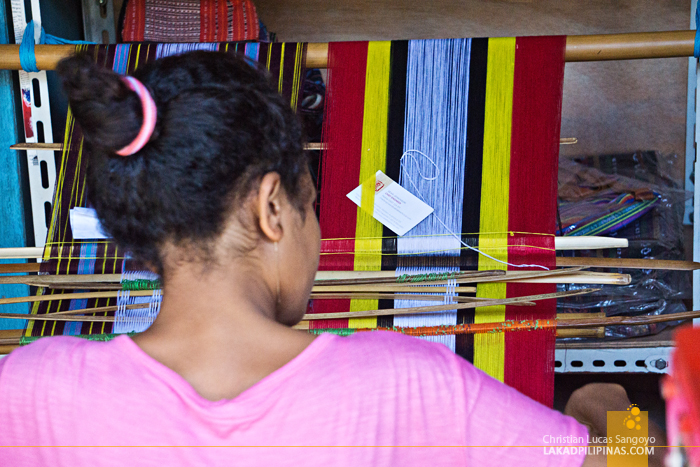 |
| A TIMORESE WEAVING AWAY INSIDE THE SHOP |
It was really geared more for tourists, which there isn’t that much, than for the Timorese people. The market is small, about two narrow alleys lined with small stores filled with shirts and caps printed with the colors of East Timor, colorful fabrics—which you can actually see them weave right there—and all sorts of trinkets like bracelets and what-nots.
 |
| THE PATEO SUPERMARKET |
From there we turned to Pateo, a grocery where we hoped to buy some supplies for our week’s stay in the country.
East Timor was under Portuguese rule for more than two hundred years and this grocery cum deli definitely reflects that. Aside from local products and produce, it has a lot of Portuguese imports, clearly meant for expats living on the capital. We didn’t get to score much since we found the prices to be a bit expensive. Pateo seemed set for the high-end market. A deli café was located right by the entrance, which is pretty popular with Caucasian peeps.
 |
| ARCHIVES & MUSEUM OF EAST TIMORESE RESISTANCE, A MUST VISIT WHEN IN EAST TIMOR |
We then wended our way to the Archives & Museum of East Timorese Resistance, dodging the heat of the sun whenever possible. Housed on a modern stark-white one-story structure, the museum is dedicated to the history of East Timor. And it was a bloody history. Colonized by the Portuguese in 1702, they remained a backwater undeveloped colony until they were set free 273 years later. Nine days after that, Indonesia invaded the island. And what followed was a bloody war that saw more than 84,000 Timorese dead. And this was not ancient history, this was fairly recent, like 90’s recent. It was only until the world clamored the withdrawal of Indonesia from the country in 1999 that East Timor got their true freedom.
 |
| LUNCH OUTSIDE THE EAST TIMOR NATIONAL UNIVERSITY |
It took us hours to soak up the history of East Timor, and besides the sadness we felt about their plight, hunger also started to creep in. Good thing the museum is just next door to the East Timor National University. We saw hundreds of students hunkered down under the shades of a park, some chowing down on lunch packed on conical papers while their friends strum and sing patriotic anthems. It was quite refreshing to hear their songs, Dua Lipa hasn’t invaded the shores of this country yet.
 |
| A MEAL ON CONICAL PAPER, SURPRISINGLY GOOD |
Wanting to try Timorese food, we watched how the kids order from the makeshift stalls and followed suit. Surrounded by plastic canisters containing all sorts of food, the lady selling us lunch started to form a conical shape from a piece of brown paper. She then methodically dumped a cup of what seemed like turmeric rice in, a helping of veggies came next, then a piece of hotdog followed by crisply fried anchovies. It was cheap at half a US dollar, and surprisingly good. We tried not to think how sanitary it was, the kids around all seemed quite healthy, after all.
 |
| THE CENTER OF DILI, PALACIO DO GOVERNO |
The sun was beating down hard as we walked towards the Palacio do Governo. East Timor’s central seat of government. Housing the country’s prime minister, the stately building sits right at the center of town facing a boulevard and the sea. We took a couple of pictures then promptly sprang to the shelter of the huge trees lining the sea wall.
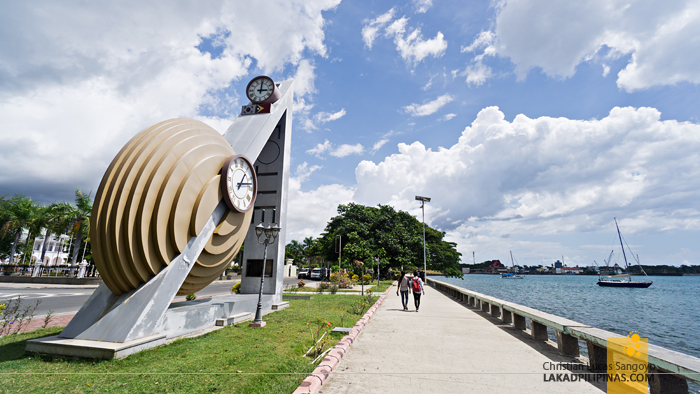 |
| MIDDAY AT THE DILI BOULEVARD |
And it wasn’t just us who were shying away from the sun. Several locals were also sitting at the water’s edge, enjoying the sea breeze against the noontime heat. A couple of street vendors approached us, selling laranja-azeda or sour oranges, and peanuts. We would soon find out that these are the only street fare being hawked on the streets of Dili.
 |
| GOOD SHADE ALONG THE BOULEVARD |
Spending about an hour at the boulevard, literally just shooting the breeze and watching kids dive from the ledge towards the water, we eventually decided that we’re done for the day. It was just too freaking hot to move further. So off we went, walking back to our hotel with the sun chasing us like the devil.
THE BEACHES OF DILI
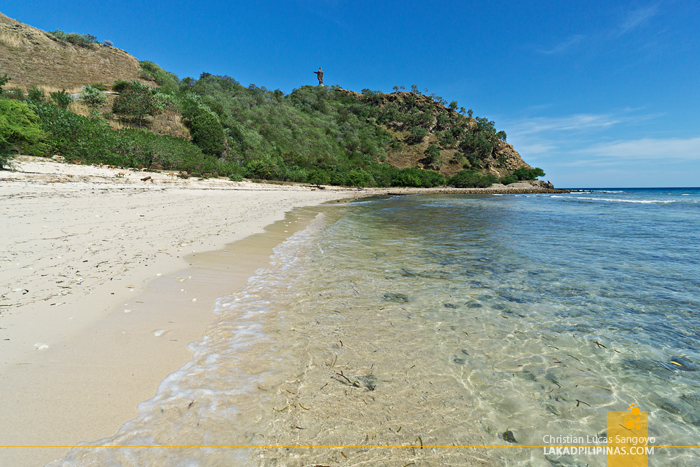 |
| THE CRISTO REI BACKSIDE BEACH |
We targeted the beaches along the Cristo Rei of Dili on our third day on the capital. And we really didn’t need to go far. The city is quite small and it only took us about ten minutes before we saw white sandy shores outside the window of the cramped microlet we’ve boarded. The beaches in Dili are something else, and they do deserve a separate story.
EASY SUNDAY
Burnt from the hike up and down Cristo Rei and from frolicking around the beach all day, we decided to rest on our fourth day in Dili. It was a Sunday, anyways. Being a dominantly Catholic country—the only one besides the Philippines in South East Asia—we decided on attending mass at the Dili Cathedral.
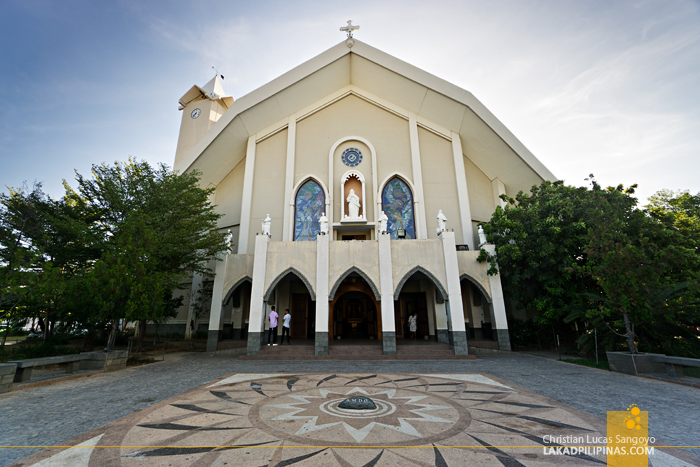 |
| SUNDAY MASS AT DILI CATHEDRAL |
We found ourselves underdressed as we strolled along the manicured gardens of the cathedral, everyone was literally on their Sunday’s best. The mass, as expected, was in Portuguese. We understood nada, but went along with it anyways.
 |
| A FRIENDLY FOOTBALL MATCH |
Afterwards, we found ourselves at the Largo de Lecidere, where everyone also seemed to be headed to. The park is at the tail-end of the Palacio do Governo boulevard. We watched as families gather on the grass while friends swap songs and stories. A few meters away, a friendly football match was ongoing and a bunch of aunties were doing the zumba. The only thing missing really was street food. There’s a couple of bakso stand right by the road, but that was it.
 |
| LARGO DE LECIDERE, THE GO TO PLACE DURING SUNDAY AFTERNOONS |
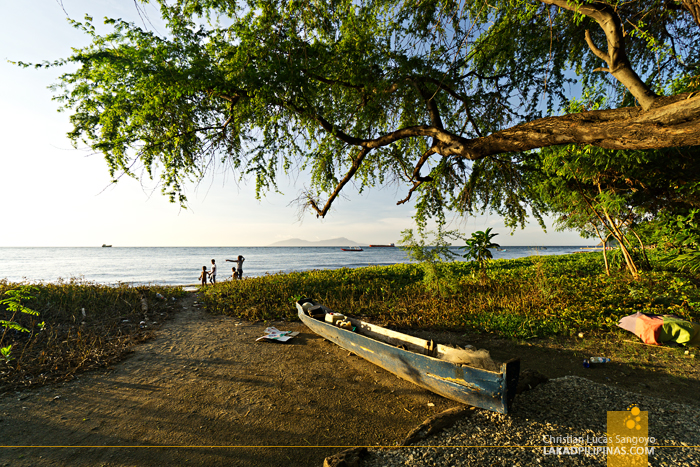 |
| SUNSET ALONG THE BEACH OF LARGO DE LECIDERE |
 |
| BAKSO WITH EGG FOR DINNER |
We watched the sun set on the beach right beside the park. It really wasn’t a proper beach—the sand was brown and course and we saw no one actually swimming on the water. To be fair, the water is relatively clean and free of flotsam. Right after, we decided on having bakso for dinner. We really didn’t have much of a choice anyway.
EXPLORING THE WESTERN PART OF DILI
The morning of our fifth day in Dili found us back on the beach. This time without the weekend crowd, we had the whole stretch all to ourselves.
 |
| PANTAI KELAPA IN DILI |
Later that afternoon, we tried looking for the Comoro Market, one of the two largest markets in Dili, but was unsuccessful with that. With nowhere to go, we ventured towards the eastern side of town. We initially thought of going all the way to the causeway I saw on the map for the sunset. But after walking and walking along the boulevard, we decided against it, it was just too dang far. We stopped at the Pantai Kelapa, a gray-sand beach, which doesn’t really look that enticing for a swim.
 |
| MONUMENTO 12 DE NOVEMBRO |
Going back towards the center of town, we passed a small octagonal iron lighthouse dubbed as the Farol do Porto de Dili, the Church of Saint Anthony Motal, a lovely small church fronting the ginormous Monumento 12 De Novembro sculpture. The massive statue depicting a man holding a fallen compatriot commemorates the Santa Cruz Massacre where more than two hundred fifty demonstrators were killed by Indonesian military in Dili in 1991.
 |
| THE DILI LIGHTHOUSE |
PAYING TRIBUTE
On the morning of our flight back to Bali, we decided to see the tomb of Sebastiao Gomes inside the Santa Cruz Cemetery. The man was killed by Indonesian troops in 1991 and his funeral saw the outpouring of thousands of Timorese people to join the funeral procession.
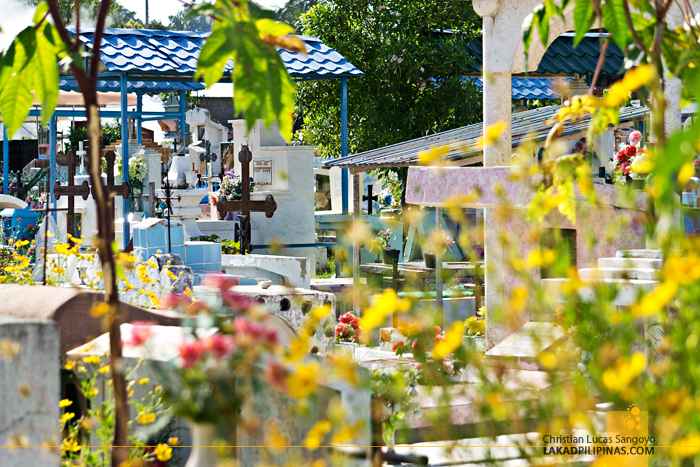 |
| EARLY MORNING AT THE SANTA CRUZ CEMETERY |
 |
| IT TOOK US A BIT OF TIME TO FIND SEBASTIO GOMES’ TOMB |
As it neared the Santa Cruz cemetery, a commotion ensued between Indonesian forces and pro-independence Timorese. This led to the Santa Cruz Massacre, which was captured on film and was shown throughout the world, eventually leading to the removal of Indonesian forces from East Timor and the country’s independence.
 |
| THE SIMPLE KIND OF LIFE IN EAST TIMOR |
Traveling to East Timor may not be for everyone. People who want the glitzy side of life, those used to set tours, shopping, and hopping from one attractions to the next, might find East Timor a tad boring. Its capital, Dili, is almost provincial in its underdevelopment, but this is where it gets its charm from. Roaming the streets of the city for a week, we found ourselves in the middle of the lives of the Timorese people, enjoying an unrushed kind of life like they do.



























































0 comments